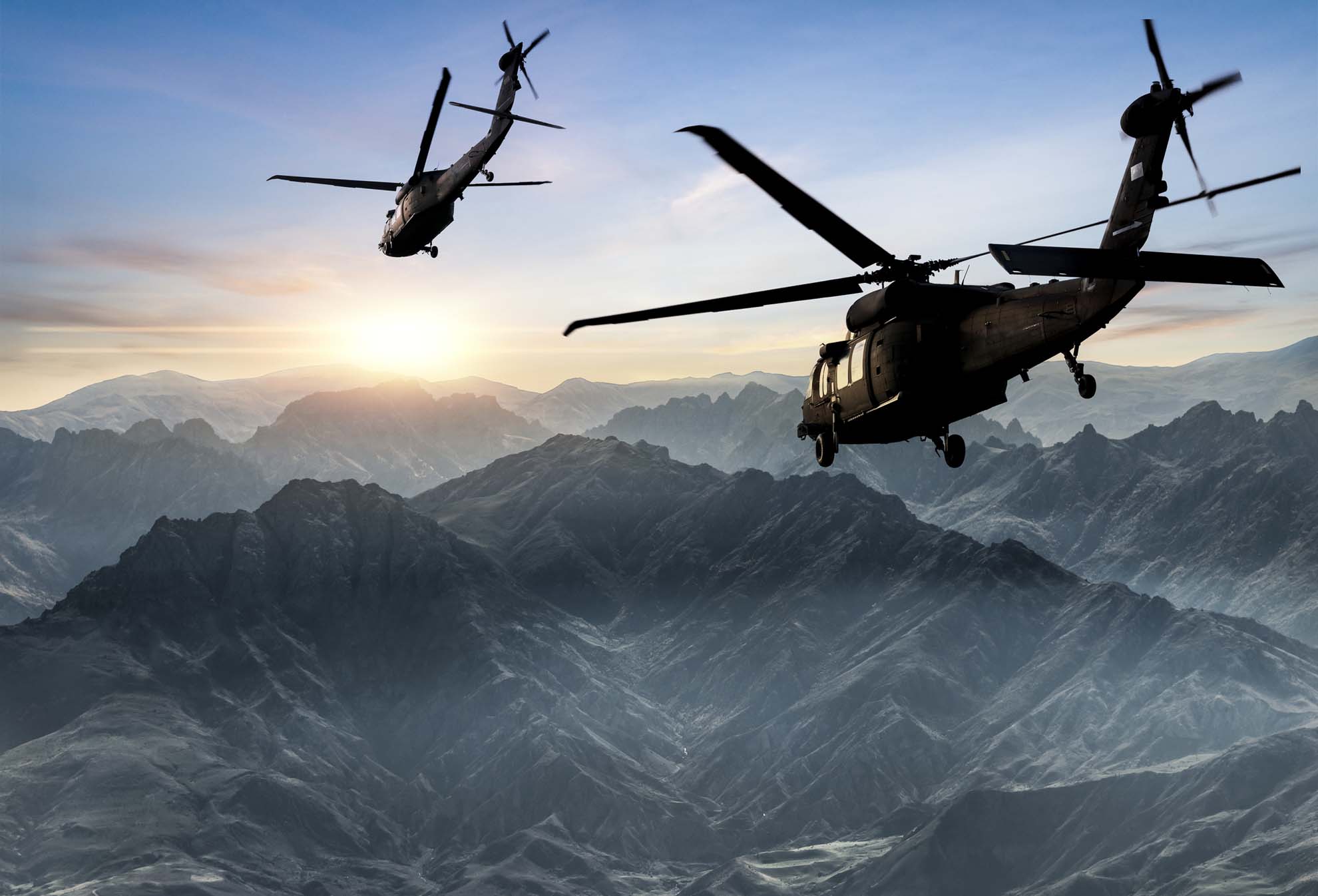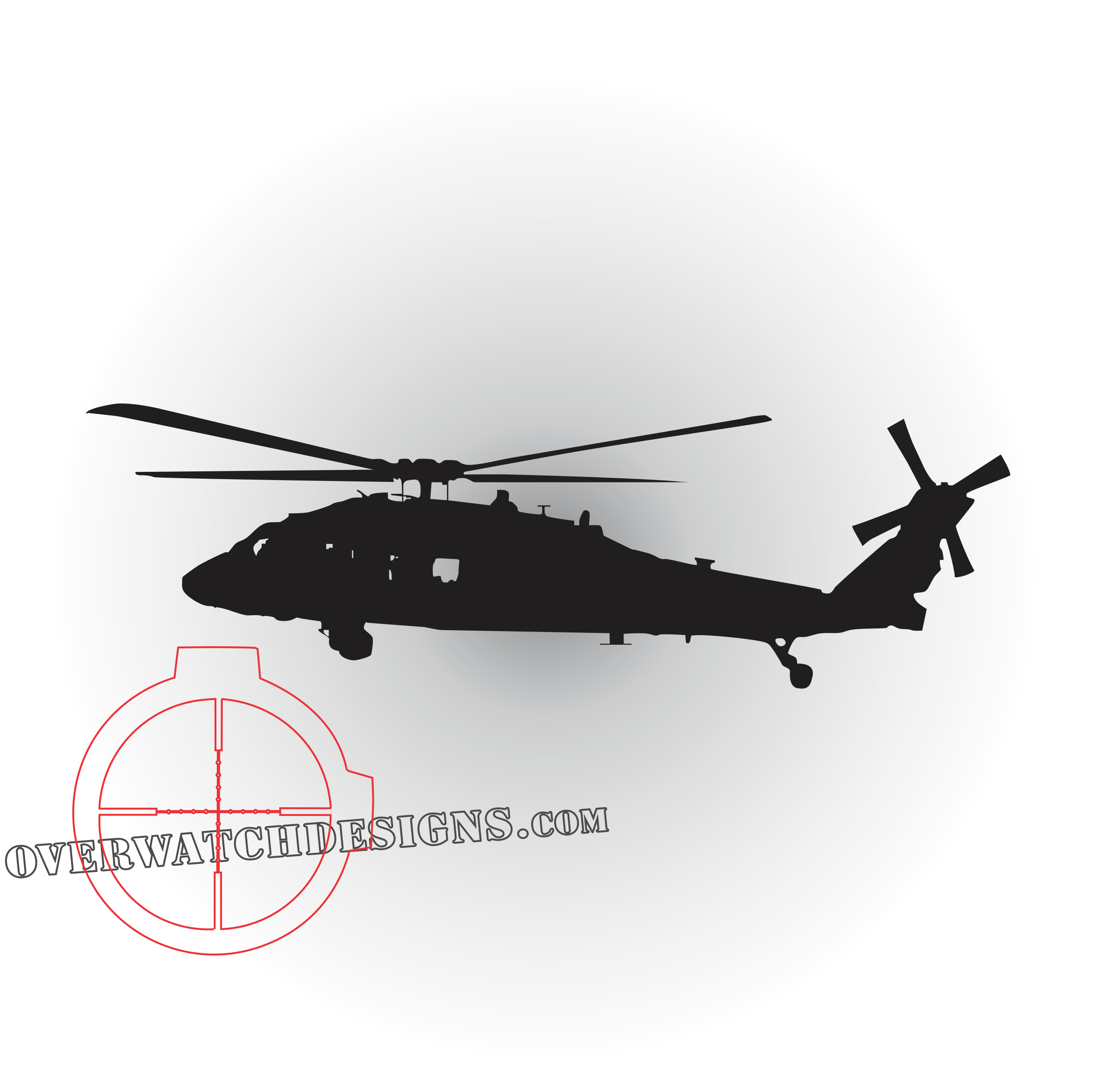UH-60 Blackhawk: An Essential Tool for Military Transportation and Rescue Procedures
Comprehensive Overview of the UH-60 Blackhawk Helicopter
The UH-60 Blackhawk helicopter, a characteristic of modern-day armed forces air travel, has actually played a crucial role in diverse operational movie theaters considering that its intro in the 1980s. As we discover its detailed background, layout requirements, and technological innovations, it comes to be evident that the Blackhawk's influence extends much past the combat zone.
Background and Growth
The UH-60 Blackhawk helicopter has regularly been a foundation of U.S. military aviation since its introduction in the late 1970s. Created by Sikorsky Airplane, the Blackhawk was created to satisfy the Army's requirement for a versatile utility helicopter that can carry out an array of goals in different atmospheres. UH-60 Blackhawk. The advancement process started in 1972, with the initial prototype flying in 1974
Its operational launching came throughout the 1980s, where it was swiftly acknowledged for its capacity, agility, and speed to transfer soldiers and cargo efficiently. The Blackhawk's efficiency in the 1983 Grenada invasion and subsequent procedures solidified its reputation as a reputable workhorse for the U.S. Military. Over the years, the helicopter has actually gone through various upgrades and variants, adapting to evolving armed forces needs, consisting of the addition of innovative avionics and weapon systems.

The Blackhawk's layout has likewise evolved to serve numerous branches of the military and allied pressures, showcasing its adaptability. Today, it stays an integral element of U.S. army operations and remains to be a recommended choice for rotary-wing air travel around the world, reflecting its enduring tradition and ongoing significance in modern-day warfare.
Design and Specs
Engineered for efficiency and versatility, the UH-60 Blackhawk helicopter features a robust design that improves its functional capacities. The airframe is constructed primarily from aluminum alloys, supplying an equilibrium of toughness and weight efficiency. With a size of 64 feet and a rotor diameter of 53 feet, the Blackhawk is developed to fit a wide variety of goals. Its maximum takeoff weight is roughly 22,000 extra pounds, allowing it to lug substantial payloads.
The helicopter is powered by two General Electric T700-GE-701C engines, each providing 1,800 shaft horse power, which ensures high levels of reliability and efficiency in varied atmospheres. The blades system is a four-blade, completely expressed layout that permits for superb ability to move and security, even in unfavorable conditions.
Additionally, the UH-60 includes innovative avionics and flight control systems that improve situational awareness and pilot control. The cabin is designed for fast reconfiguration, enabling it to support various goal profiles, from troop transportation to clinical emptying. In general, the design and requirements of the UH-60 Blackhawk show a commitment to functional quality and flexibility in the area.

Roles and Objectives
With its robust layout and progressed abilities, the UH-60 Blackhawk helicopter offers a multitude of roles throughout numerous military operations. Originally created for army transport, the Blackhawk has progressed to carry out a large array of missions, consisting of medical discharge, search and rescue, and logistical support. Its convenience enables it to run in diverse environments, from metropolitan landscapes to tough surfaces.
In fight circumstances, the Blackhawk is important for putting and drawing out unique procedures pressures, supplying them with the flexibility required to execute their missions efficiently. Additionally, the helicopter can be equipped with sophisticated interaction and avionics systems, boosting its duty as a command and control system in vibrant fight scenarios.

Technological Improvements
Integrating advanced modern technologies has substantially boosted the performance and abilities of the UH-60 Blackhawk helicopter. The consolidation of innovative avionics systems, including digital flight control and improved situational recognition displays, has enhanced pilot navigating and decision-making in intricate environments. These systems allow real-time data processing, assisting in far better communication and coordination during objectives.
Additionally, the Blackhawk's airframe has actually undertaken substantial upgrades, utilizing composite materials that decrease weight while increasing structural stability. This adjustment adds to enhanced gas performance and functional array. The helicopter is also geared up with advanced propulsion systems that offer better power and integrity, making certain optimum efficiency in varied conditions.
Furthermore, the combination of modern sensors and these details tool systems has actually broadened the Blackhawk's flexibility. Enhanced targeting capacities and progressed danger detection systems enable effective engagement in fight situations, increasing mission success prices.
Worldwide Impact and Heritage
The UH-60 Blackhawk helicopter has made a profound influence on altruistic efforts and company website military procedures worldwide because its intro in the late 1970s. Its adaptability and advanced modern technology have allowed it to serve in various functions, including army transport, clinical evacuation, and logistical assistance (UH-60 Blackhawk). The helicopter's performance in fight scenarios has actually redefined aerial flexibility, enabling pressures to respond promptly and efficiently to dynamic battleground problems
Internationally, the Blackhawk has actually been released in numerous problems, from the Persian Gulf to the Balkans, showcasing its flexibility to diverse settings. Its duty in humanitarian missions, such as catastrophe alleviation and search-and-rescue operations, has further strengthened its track record as a trusted possession in situation situations.
The legacy of the UH-60 extends past its armed forces applications; it has likewise influenced helicopter style and operational doctrine worldwide. Its success has triggered other countries to create similar aircraft, improving international aviation requirements and functional abilities. As the Blackhawk remains to progress with modern upgrades, its effect on both army and noncombatant aeronautics continues to be substantial, guaranteeing its location in history as one of one of the most iconic helicopters of its time.
Conclusion
The UH-60 Blackhawk helicopter stands as a testimony to cutting-edge check here engineering and flexible armed forces application. As an outcome, the Blackhawk has actually left an indelible mark on armed forces aviation, affecting future helicopter layouts and redefining tactical strategies throughout the globe.
The UH-60 Blackhawk helicopter, a hallmark of contemporary military aeronautics, has actually played a crucial duty in diverse functional theaters since its introduction in the 1980s - UH-60 Blackhawk.The UH-60 Blackhawk helicopter has regularly been a foundation of U.S. military air travel given that its intro in the late 1970s.Engineered for efficiency and versatility, the UH-60 Blackhawk helicopter includes a durable style that enhances its functional abilities.With its robust style and progressed capacities, the UH-60 Blackhawk helicopter offers a wide variety of roles throughout different army operations.The UH-60 Blackhawk helicopter has actually made a profound influence on humanitarian efforts and armed forces procedures worldwide considering that its introduction in the late 1970s